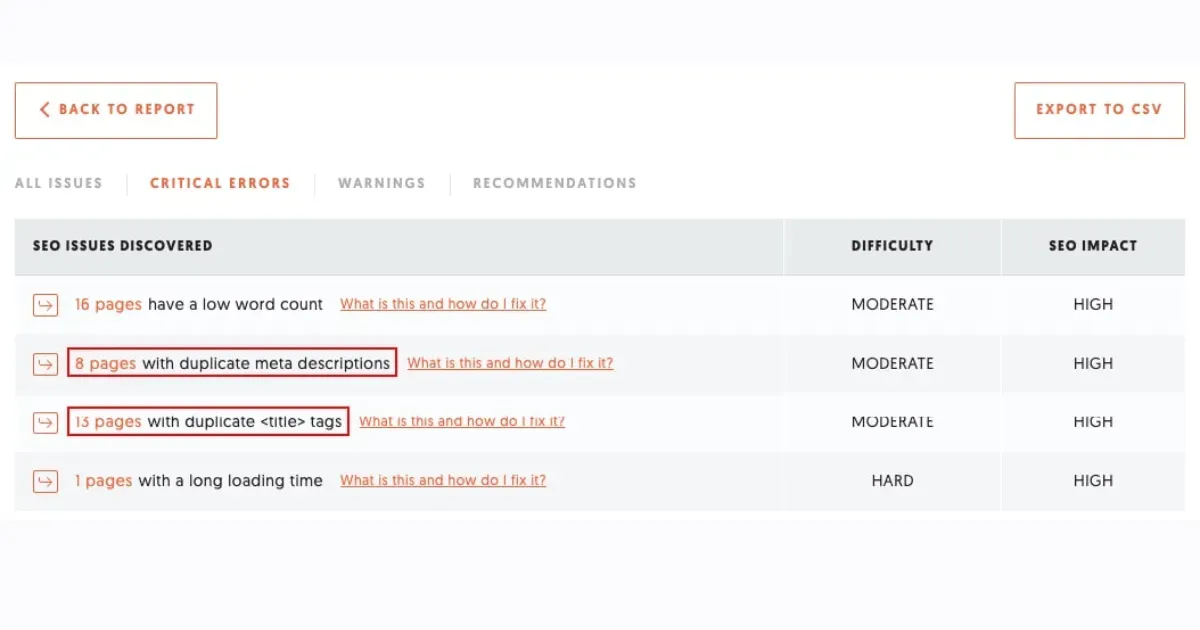How to Improve SEO on Shopify: Tips for Beginners
- Why should we take SEO on Shopify Seriously?
- How to Improve SEO on Shopify
- Ensure that a Meta title and Description are Assigned to every Product and Page
- Set a custom URL handle (slug) for each Product and Page
- Ensure that your content is Well-structured and Organized by utilizing Appropriate Headings
- Eliminate the occurrence of Duplicate Content and Meta tags
- Utilize Internal Linking
- Make sure to Include ALT text for all of your Images
- Use Descriptive names when naming Image files
In the competitive world of e-commerce, having a beautifully designed Shopify store is only half the battle. To attract and retain customers, you need to ensure your store is easily discoverable by search engines like Google. This is where Search Engine Optimization (SEO) comes into play. Learning how to improve SEO on Shopify is crucial for driving organic traffic, increasing visibility, and boosting sales. In this article, we'll explore essential strategies and techniques to enhance your Shopify store's SEO and help your business thrive online.
Why should we take SEO on Shopify Seriously?
Before knowing how to improve SEO on shopify, let's find out about the importance of SEO on Shopify. Every single day, Google handles an astonishing number of over 3.5 billion searches. In fact, search plays a significant role in generating up to 80% of all trackable website traffic. It is not surprising that a majority of marketers, specifically 82%, acknowledge the positive impact of SEO on business goals.
How to Improve SEO on Shopify
Here are some tips on how to improve SEO on Shopify that you may want to take note of:
Ensure that a Meta title and Description are Assigned to every Product and Page

The first tip on how to improve SEO is to ensure that a meta title and description are assigned to every product and page. The page title refers to the text that is displayed in the tab of your web browser. It is commonly shown in the SERPs alongside a page description. By default, Shopify utilises the product name as the page title and the product description as the page description. There are some improvements that can be made to enhance its ability to attract more visitors from search.
According to Moz, it is recommended to keep the title tag within 60 characters in length. In addition to the product name, it is also possible to incorporate a few alternative keywords. As an illustration, let's consider a product called "Adidas Originals Superstar." You have the option to include terms such as "shoes," "trainers," or "sneakers." It is recommended to keep the meta description within a limit of 155 characters. The content should incorporate a comprehensive product description while also effectively enticing users to click on the search result. By incorporating phrases such as "in stock" and "delivered next day," you can effectively distinguish yourself from other sellers.
It is important to ensure that both tags are distinct for every product or page. It is crucial to adhere to the specified character limits, ensuring not to exceed the recommended counts mentioned above. Please note that the Shopify character limits may be outdated. In the event that it occurs, Google has a choice to cut the text or opt for an alternative excerpt from the page.
Set a custom URL handle (slug) for each Product and Page
The URL handle, also known as the slug, is the final segment of a URL that serves to identify a specific product or page within your store. As an illustration on how to improve SEO on Shopify, in the given URL "https://www.mystore.com/product/adidas-superstar", the slug can be identified as "adidas-superstar". Shopify uses product names without any blank spaces or special characters as the default setting. The slug should provide a clear indication to the user about the content of the page, incorporating relevant keywords and maintaining a focused approach. The description should be concise and use only lowercase letters. Replace a blank space with a dash "-". It is advisable to omit unnecessary words such as prepositions and questions.
Ensure that your content is Well-structured and Organized by utilizing Appropriate Headings

Ensure that your product page utilises a solitary H1 element, typically representing the product name on how to improve SEO on Shopify. To confirm this, navigate to your product page and examine the element in your browser. In order to ensure that all of your pages have the necessary H1 element, you will need to access the theme code and make the appropriate edits.
It is recommended to use the other headings in a hierarchical order, starting with H1, then H2, and so on. However, the significance of this practice has diminished in recent times. It is important to use headings solely for the purpose of emphasising important information or dividing content sections. Do not utilise them for adjusting the font size.
Eliminate the occurrence of Duplicate Content and Meta tags
As stated in the recommendation on how to improve SEO on Shopify for meta titles and descriptions, it is crucial to avoid any instances of duplicate tags and content in your store. When there is a need to create multiple product or landing pages with similar content, it is recommended to use canonical links. These links help inform Google about the primary page that should be given priority in search results. Another option is to utilise the "noindex" attribute, which effectively conceals the duplicate page from search engines and prevents it from being included in search results.
Certain Shopify SEO apps can assist in identifying duplicate content and tags within your store. Alternatively, you have the option to utilise external services such as Siteliner or SEO Analyser to perform a thorough scan of your store on an as-needed basis. Both options are available for free. The Siteliner is an excellent tool for scanning your content, while the SEO Analyser is designed to identify duplicate tags and other errors such as low word counts or missing elements.
Read more: Best SEO Apps for Shopify to Boost Your Optimization Efforts
Utilize Internal Linking

This particular aspect is often overlooked in how to improve SEO on Shopify, yet it can significantly influence the rankings of your store. Utilise internal links. These can be utilised in various sections of your website, such as product descriptions, FAQs, the about us page, and of course, blog posts. Below, you'll find a prime illustration of how Asos has effectively implemented internal linking. The product description includes links to the "shorts" category/collection and also references the brand category/collection multiple times.
In addition to using text links, you have the option to incorporate images and include sections such as relevant products or products in the same category on your product pages.
Make sure to Include ALT text for all of your Images
Alt text is an HTML attribute used to provide a description and purpose for an image on a webpage. By default, Shopify automatically assigns the product name as the alt text for all product images. Once again, this solution is an improvement over leaving it blank, but there are opportunities for optimisation in how to improve SEO on Shopify. Ensure that your descriptions are detailed and tailored to each specific image variation. To modify the alt text, navigate to the Product section, then select All Products. From there, choose a specific product and click on a particular image. Finally, locate and click on the "Add alt text" option. If you utilise descriptive image file names (as mentioned in the next point), you also have the option to accomplish this through export and import, which offers greater convenience.
Find out more: 10+ Best Free Shopify Apps for New Stores
Use Descriptive names when naming Image files
Using descriptive names for your image files can be beneficial for various practical purposes, not just for how to improve SEO on Shopify. File names such as "main.jpg" or "1.jpg" lack descriptive information that can provide meaningful context to both users and search engines like Google. When labelling images, it is helpful to use descriptive names such as "adidas-backpack-front.jpg" to provide a clear understanding of the image content. It is a favourable occasion to incorporate your chosen terms.
Improving SEO on your Shopify store is an ongoing process that requires attention to detail, regular updates, and a strategic approach. By implementing the right techniques on how to improve SEO on Shopify, such as optimizing product pages, enhancing site speed, leveraging keywords, and creating valuable content, you can significantly boost your store's visibility on search engines. Stay proactive, keep up with SEO best practices, and continuously monitor your performance to ensure long-term success. With these strategies, you'll be well on your way to improving SEO on Shopify and driving more organic traffic to your store.

Hey! I'm Andrew Doan. Together, we'll build the foundation for a successful store and ensure it thrives! Let grow together!
Start Building Trust Today
Install the Product Reviews app to improve your store's credibility and boost sales with real customer reviews.
Get Started with Zero CostWhat to not miss out on our blog
Gain insightful knowledge and invaluable experiences from dedicated experts.

Top 10 Christmas Shopify Theme Ideas for Holiday Store Makeovers
Looking for a Christmas Shopify theme that runs fast to refresh your shop? Check out these festive picks now. Make your storefront shine this holiday season.

Newsletter
Get all the stories you need-to-know from the most powerful name in news delivered first thing every morning to your inbox
_1200x630.webp)
